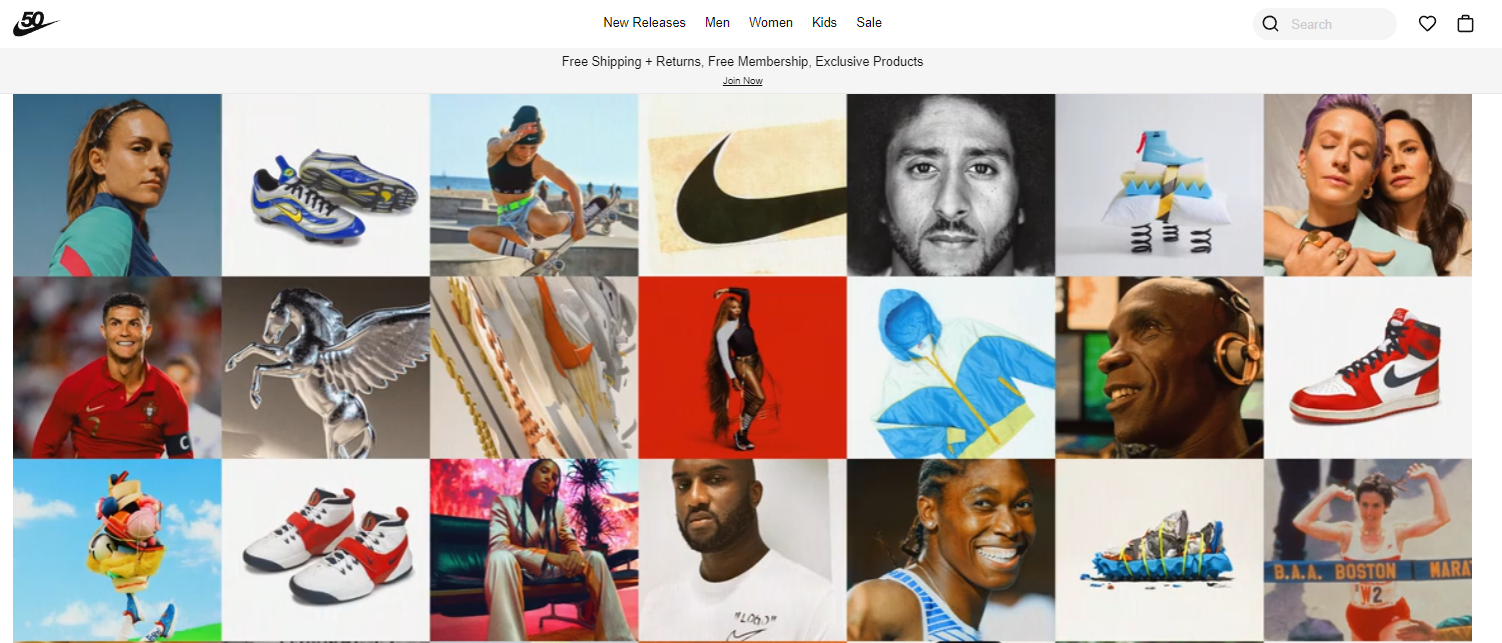Everyone knows the saying, a picture is worth a thousand words. When it comes to global marketing, it’s true.
Visual elements displayed on your app or website are powerful components that influence how users will regard your brand. Choosing the right imagery can help you make a solid connection with your audience. But choosing the wrong imagery for your audience can directly affect your bounce and conversion rates.
That’s why it’s so important to localize your images. In this post, we’ll explore image localization in more detail.
What is Image Localization?
Image localization is the practice of adapting the images in your digital content for a new audience in a different location.
For example, popular sneaker retailer Nike sells their sneakers in over 160 different countries. So Nike’s marketers created a unique homepage for each country. Translating website text is a key part of their localization strategy, but so is imagery.
Example: Image Localization on Nike.com
In the example below, take a look at the differences between Nike’s China and USA homepages:
Nike’s Localized Homepage for China:

Nike’s American Homepage:

If you look closely, you might notice that each site uses imagery very differently. Nike’s China site focuses on candid snapshots of young Chinese basketball players, while the American site centers on bold imagery and famous athletes. Both sites do a great job of representing the Nike brand with unique customizations for each target market.
Luckily, you don’t have to be an eCommerce giant like Nike to get image localization right. We’re here to help!
6 Image Localization Tips
As you begin your image localization journey, here are 6 best practices to keep in mind.
1: Research Your Target Market
The first thing to keep in mind is that one culture’s thumbs-up emoji (👍) can mean the exact opposite in another culture. That’s why it’s vital to thoroughly research your target audience before choosing your imagery. You will learn not only how to avoid cultural mistakes, but also how to best use visual representation to get your message across.
2: Use Unique Images for Each Market
Since images carry different meanings for different cultures, it’s a big mistake to target different locales with the same imagery. Adapting images to your target market shows that you have made an effort to deliver your brand message with a native touch. Plus, it makes it easier to gain the respect of your audience: in some countries like Brazil, English content on a website makes a user much less likely to convert.
3: Use Culturally Appropriate Imagery
Values and morality also vary widely depending on your target country. Using culturally-appropriate imagery right from the start will save you a lot of time, money, and headaches. For example, if you share a photo of your team having beers on your About Us page, this is fine for most American audiences. But this type of photo would be inappropriate for some Arab audiences that don’t consume alcohol.
4. Don’t Overlook Colors
Color is an important element of UX and web design. Did you know that colors are interpreted differently in different regions? According to the principles of color psychology, you need to be careful about which colors to pick. Red is considered festive and joyful in China, but in Japan, red is regarded as aggressive and symbolizes anger. Yellow is considered to be lucky in most Western countries, but in France, it expresses jealousy.
5. Be Consistent
Even if you aim to localize every aspect of your website, you shouldn’t forget your company’s unique identity. Creating different versions of your website for different markets shouldn’t mean that each localized version carries a different brand message. Building a good content localization strategy can help you strike the right balance between cultural customization and staying on-brand. Tools like style guides and glossaries can also help you keep branding consistent across all your localized sites.
6. Localize Text in Images
If any of your images have written text in them, don’t forget to translate the text into your audience’s native language. Following that, you need to make sure any captions and alt text are translated as well. Translating your alt text can be especially helpful for SEO rankings.
Final Thoughts
Visual imagery has the power to make or break the success of your localized marketing efforts. Choosing appropriate images should be an essential part of your localization process.
Here at Localize, we understand that the role of images on your website is to bridge cultures, not set them apart. Contact us today for help localizing all elements of your site or app–including images, videos, text, and more.






